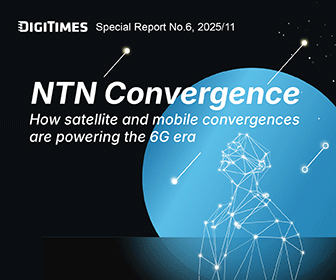Leading Indian battery manufacturer Amara Raja Batteries has said they intend to establish a new manufacturing plant operating at a giga-scale capacity, with a primary focus on producing Li-ion cells and battery packs that are optimized for the unique conditions found in India. The move is part of the company's efforts to transition from being just a lead-acid battery maker to an energy and mobility player.
Speaking to DIGITIMES Asia, C. Niranjan, AVP and head of operations & projects at the company, explained that the next phase of growth would be transitioning to the lithium-ion battery space and solutions for electric mobility. The focus on this segment is to reduce carbon footprint and the emergence of lithium-ion chemistry as an advanced energy storage technology.
"Under this focus area of Energy & Mobility, Amara Raja decided to make important investments in creating relevant infrastructure and in building capabilities," Niranjan said. "As part of the initial investments in this space, we will be setting up a first-of-its-kind advanced energy research and innovation center called 'Amara Raja E +ve' in Telangana. In addition, we plan to set up a manufacturing plant in giga scale that will primarily focus on manufacturing Li-ion cells and battery packs that are best suited for Indian driving conditions."
Production capacity to meet the growing demand
The gigafactory being set up in the state of Telangana will have an eventual capacity of around 16 GWh. The assembly of battery pack units for automotive and industrial applications will have an eventual capacity of 5 GWh. The overall estimated investment to achieve these capacities will be around Rs 9,500 crore (INR95 billion, or about US$1.15 billion) to be spent over a period of the next ten years.
"In the first phase of New Energy Business, we plan to invest Rs 1,500 to Rs 1,700 crore in the next 2-3 years, which will include setting up of an innovation center, customer qualification plant with 60 MWh capacity and a 2 GWh cell manufacturing facility," Niranjan said. "In subsequent phases, we will commence operations based on the overall demand and estimate that in each phase, the investment range would be Rs 2,500 crore. The first phase of the factory (up to 2 GWh) will be operational by April 2026."
Proactive approach to new technologies
Amara Raja has a keen interest in creating an India-centric ecosystem for the design, development, and manufacturing of advanced cell technologies. The company is taking advantage of multiple technologies from the choices available for cell chemistry and form factors such as NMC (nickel manganese cobalt), LFP (lithium ferrophosphate), LTO (lithium-titanium-oxide), and others in cylindrical, prismatic, and pouch form factors.
"We have also developed an HV Li-ion Battery pack for e-mobility application, active liquid cooling system with IoT features," Niranjan said. "We also realize that there are a number of promising start-ups in the Li-ion technology space, and we are continuously exploring opportunities to develop globally competitive technology and manufacturing infrastructure as part of our gigafactory investments. Previously, Amara Raja Batteries has invested in Indian and European start-ups working in this area."
Challenges and opportunities in the subcontinent
Of course, the sector is not without challenges, and they begin with the procurement of raw materials to make EV batteries. India imports almost 70 percent of its Li-ion cell requirements. The country is also facing poor access to key raw materials like lithium, nickel, cobalt, and manganese, which account for 80 percent of the cell cost. However, Niranjan is confident of overcoming these constraints.
"As per the government of India estimates, the country will require 60 GWh of Li-ion cells by 2025 and 120 GWh by 2030," Niranjan said. "This is all due to the increasing penetration of electric vehicles in the country, which in turn is pushing the demand for Li-ion batteries, a major component of an EV."
Recently, lithium reserves were found in the Reasi District of Jammu and Kashmir state. If the recourse and purity are significant, this could put the country on the global EV roadmap and help in meeting its domestic demand. However, at the moment, most Li-ion cells are imported, and there is a need to push for local manufacturing of Li-ion batteries to bring down the cost of the EVs.
Conclusion
Several other Indian companies have also announced the setting up of lithium-ion cell and battery manufacturing plants. Besides inherent demand, the Indian government's schemes like the National Mission on Transformative Mobility, the tax subsidies, and the PLI (incentives) for cell manufacturing are also raising hopes for this sector.
Amara Raja's move to expand into energy and mobility and establish a manufacturing plant for Li-ion cells and battery packs suited to Indian driving conditions signals a strong commitment to the EV market.
With the Indian government's initiatives and incentives for cell manufacturing, as well as the increasing demand for EVs in the country, the company's investment in this area could pay off significantly. Furthermore, as the technology and infrastructure for EVs continue to advance, Amara Raja's forward-looking strategy positions it well to be a key player in India's future EV landscape.

C. Niranjan, AVP and Head of Operations & Projects, Amara Raja Batteries. Credit: Amara Raja.




